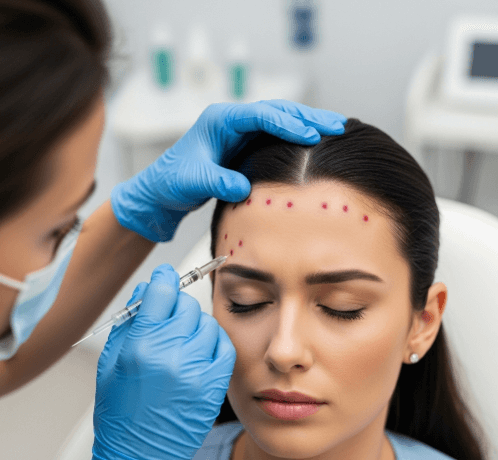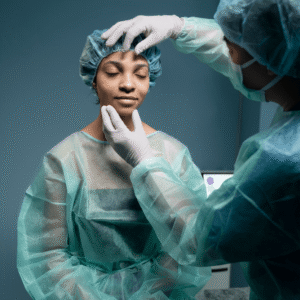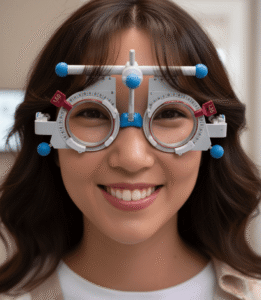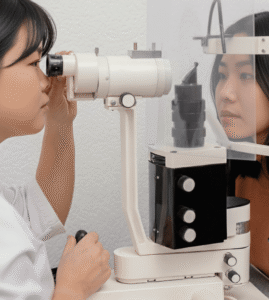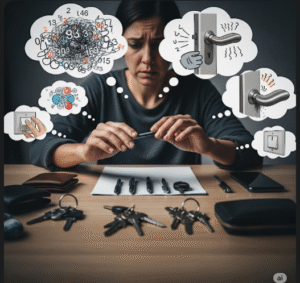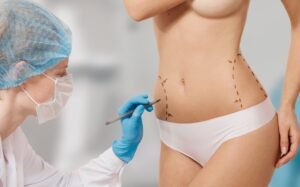What It Is
Migraine Botox is a medical use of botulinum toxin type A, specifically approved for the treatment of chronic migraines. Unlike aesthetic Botox, which targets facial muscles to reduce wrinkles, Migraine Botox is injected into specific muscle groups of the head, neck, and shoulders to:
- Relax overactive muscles.
- Block the release of pain-related neurotransmitters.
- Prevent activation of pain networks involved in migraines.
This reduces the frequency, duration, and severity of migraine attacks.
In Korea, Migraine Botox is offered not only in neurology and pain clinics but also in dermatology and aesthetic centers that specialize in therapeutic Botox applications. It is valued as a safe, non-surgical, and effective preventive treatment for patients with chronic migraines.
Why It’s Done
Patients undergo Migraine Botox for several reasons:
➝ Reduce migraine frequency → Often decreases attacks by 50% or more.
➝ Shorten duration and intensity → Migraines become less severe and easier to manage.
➝ Alternative to medications → Helps patients who cannot tolerate daily oral migraine drugs.
➝ Improve quality of life → Reduces disability, missed workdays, and social disruption.
➝ Preventative relief → Especially effective for chronic sufferers (15+ headache days per month).
➝ Dual benefits → May also improve tension headaches, jaw clenching, or neck stiffness.
In Korea, where wellness and preventive health care are prioritized, Migraine Botox is increasingly seen as part of a holistic treatment plan for chronic pain management.
Alternatives
While Migraine Botox is highly effective, alternatives and complementary treatments may also be considered:
- Oral preventive medications → Beta blockers, anti-epileptics, antidepressants.
- CGRP inhibitors (injections) → Newer targeted drugs for migraine prevention.
- Acupuncture → Commonly used in Korea for tension and migraine relief.
- Physical therapy → Improves posture and reduces muscle strain contributing to headaches.
- Lifestyle modifications → Stress management, hydration, and sleep hygiene.
- Nerve blocks → Injections of anesthetic agents into specific nerve groups.
In Korea, many patients combine Botox with lifestyle therapy, acupuncture, or herbal medicine for an integrative approach.
Preparation
Preparation ensures treatment success and safety:
➝ Consultation → Neurologist or trained physician confirms migraine diagnosis.
➝ Headache diary → Patients may be asked to track frequency and triggers.
➝ Medical history → Disclosure of medications, neuromuscular conditions, or allergies.
➝ Avoid blood thinners → Stop aspirin, ibuprofen, or supplements 5–7 days before (with medical advice).
➝ Clean skin → Arrive without makeup or hair products in treatment areas.
➝ Numbing (optional) → Topical anesthetic or ice may be used to reduce injection discomfort.
How It’s Done
A Migraine Botox session typically takes 20–30 minutes and follows a standardized protocol:
- Cleansing & sterilization → Head, neck, and shoulder areas are disinfected.
- Injection mapping → About 31 standardized injection sites are marked.
- Injection process →
- Fine needles deliver Botox into the forehead, temples, scalp, back of the head, neck, and shoulders.
- Each site receives a very small dose.
- Post-treatment care → Gentle pressure or cooling packs may be applied.
Treatment plan:
- Initial improvement may be noticed within 2–4 weeks.
- Full therapeutic effect often seen after 2–3 treatment cycles.
- Sessions are repeated every 12 weeks (3 months).
- Long-term relief achieved with consistent treatments.
Recovery
Recovery is quick, with little to no downtime:
- Immediately after → Mild redness, swelling, or tiny bumps at injection sites.
- Day 1–3 → Possible soreness in the head, neck, or shoulders.
- Week 2–4 → Gradual reduction in migraine intensity and frequency.
- Month 3 → Peak benefits usually achieved by this stage.
Aftercare tips:
➝ Avoid rubbing or massaging treated areas for 24 hours.
➝ Stay upright for 4 hours post-injection.
➝ Skip strenuous workouts, alcohol, and saunas for 24–48 hours.
➝ Keep a headache diary to track changes and improvements.
➝ Return for follow-ups every 3 months as advised.
Complications
Migraine Botox is considered very safe, but possible side effects include:
➝ Bruising or swelling → Common, resolves in a few days.
➝ Neck pain or stiffness → Temporary, due to muscle relaxation.
➝ Mild headache → Can occur immediately after injections.
➝ Eyelid drooping (rare) → If Botox spreads to nearby muscles.
➝ Asymmetry or weakness (rare) → Usually mild and temporary.
Korean specialists minimize risks by using precise dosing, standardized injection mapping, and FDA/KFDA-approved products.
Treatment Options in Korea
In Korea, Migraine Botox is performed by specialists in neurology, pain management, and advanced aesthetic clinics. Patients can choose from:
- Preventive Botox for patients with chronic migraines (15+ headache days/month).
- Combination programs including Botox + acupuncture for integrative pain management.
- Migraine Botox with physical therapy to address posture and neck tension.
- Holistic wellness programs that combine Botox with stress relief, hydration, and lifestyle guidance.
- Cosmetic-aesthetic hybrid treatments where patients benefit from both migraine relief and wrinkle reduction in forehead or temples.
Final Thoughts
Migraine Botox in Korea is a safe, effective, and non-surgical way to manage chronic migraine headaches. By targeting multiple injection sites across the head, neck, and shoulders, it reduces the frequency, severity, and disruption caused by migraines.
Korean clinics excel in providing customized, integrative care by combining modern medical protocols with holistic wellness practices such as acupuncture or posture correction. For patients seeking long-term migraine prevention and improved quality of life, Migraine Botox in Korea stands as one of the most advanced and reliable solutions worldwide.

